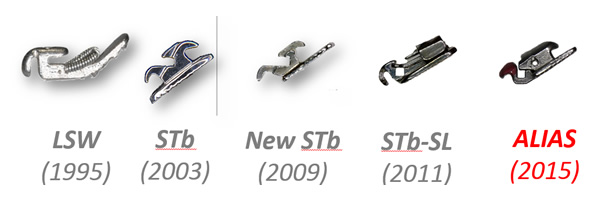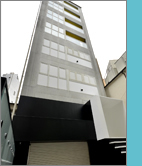The reason E-LINE made lingual orthodontics our specialty
Back in the 1980s, when lingual orthodontics began to be popular some problems with the technology, the complexity and difficulty of the treatment itself, stopped lingual orthodontics from becoming very popular or from spreading throughout the world. On the other hand our patients had a strong interest in an invisible orthodontic device and so, in response to this interest, our director, Dr. Takemoto, travelled to America as a member of the lingual orthodontics treatment development team (of the largest maker of orthodontic equipment in America, Ormco).
After he returned to Japan, he used the techniques and the devices that he had learned about in the U.S., and put his energy into developing better, more functional, and more comfortable orthodontic devices. By making various test devices and running randomized trials, he finally succeeded in creating a system which achieved the same treatment results as traditional labial orthodontics.
Soon after, lingual orthodontics methods became viable and patients were very pleased. However, it was realized that there were several difficulties in the application of lingual orthodontics treatment back in the 80s and 90s. By putting the device on the lingual side of the teeth, it reduced the amount of space in patients' mouths, causing discomfort. Patients also reported difficulty in pronunciation, discomfort while eating meals, and difficulty in brushing their teeth. This was especially true for children, as they have smaller jaws, so the device felt even bigger for them. However, patients did get used to it after several days or weeks: initially we had to sacrifice some comfort to ensure that the invisible device worked. Even though we knew that a smaller and thinner device would be better, at that time no such device had been developed, so, for the time being, we had to use devices as big as the labial (lip side) ones in order to carry out the treatment.




